Electric field given by the vector →E=E0l(xˆi+yˆj) N/C is present in the x−y plane. A small ring of mass M carrying charge +Q, which can slide freely on a smooth non conducting rod, is projected along the rod from the point (0,l) such that it can reach the other end of the rod. Assuming there is no gravity in the region. What minimum velocity should be given to the ring? if in S.I. unit QE0lM=8
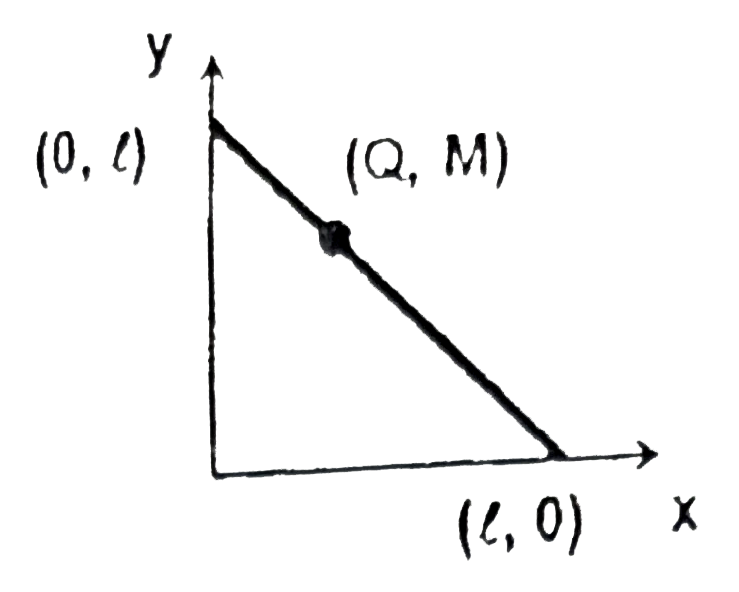
The correct Answer is:(QL2/2m)1/2
Step by step video & image solution for Electric field given by the vector vecE=(E_(0))/(l)(xhati+yhatj) N/C is present in the x-y plane. A small ring of mass M carrying charge +Q, which can slide freely on a smooth non conducting rod, is projected along the rod from the point (0,l) such that it can reach the other end of the rod. Assuming there is no gravity in the region. What minimum velocity should be given to the ring? if in S.I. unit (QE_(0)l)/(M)=8 by Physics experts to help you in doubts & scoring excellent marks in Class 12 exams.
Topper's Solved these Questions
- BOOK - MOTIONCHAPTER - ELECTROSTATICS - I EXERCISE - EXERCISE - 3 (Level -II) (Section A)6videos
ELECTROSTATICS - I
- BOOK - MOTIONCHAPTER - ELECTROSTATICS - I EXERCISE - EXERCISE - 3 (Level -II) (Section B)3videos
ELECTROSTATICS - I
- BOOK - MOTIONCHAPTER - ELECTROSTATICS - I EXERCISE - EXERCISE - 3 (Level -I) (Section E)6videos
ELECTROSTATICS - I
- BOOK - MOTIONCHAPTER - ELECTROSTATICSEXERCISE - Exercise -3 Section (B) Previous Year Problems | JEE Main30videos
ELECTROSTATICS
- BOOK - MOTIONCHAPTER - ELECTROSTATICS-IIEXERCISE - Exercise - 4 (Level - II)30videos
ELECTROSTATICS-II
Similar Questions
A rod of length l is released from the vertical position on a smooth horizontal plane. What is the nature of motion of the free end of the rod ?
View SolutionA uniform rod of mass m and length l rests on a smooth horizontal surface. One of the ends of the rod is struck in a horizontal direction at right angles to the rod. As a result the rod obtains velocity v0. Find the force with which one-half of the rod will act ont he other in the process of motion.
View Solution
Knowledge Check
- Question 1 - Select One
Electric field given by the vector →E=xˆi+yˆj is present in the x y plane. A small ring carrying +Q, which can freely slide on a smooth nonconducting rod, is projected along the rod from the point (0,L) such that it can reach the other end of the rod. What minimum velocity should be given to the ring ? (Assume zero gravity).
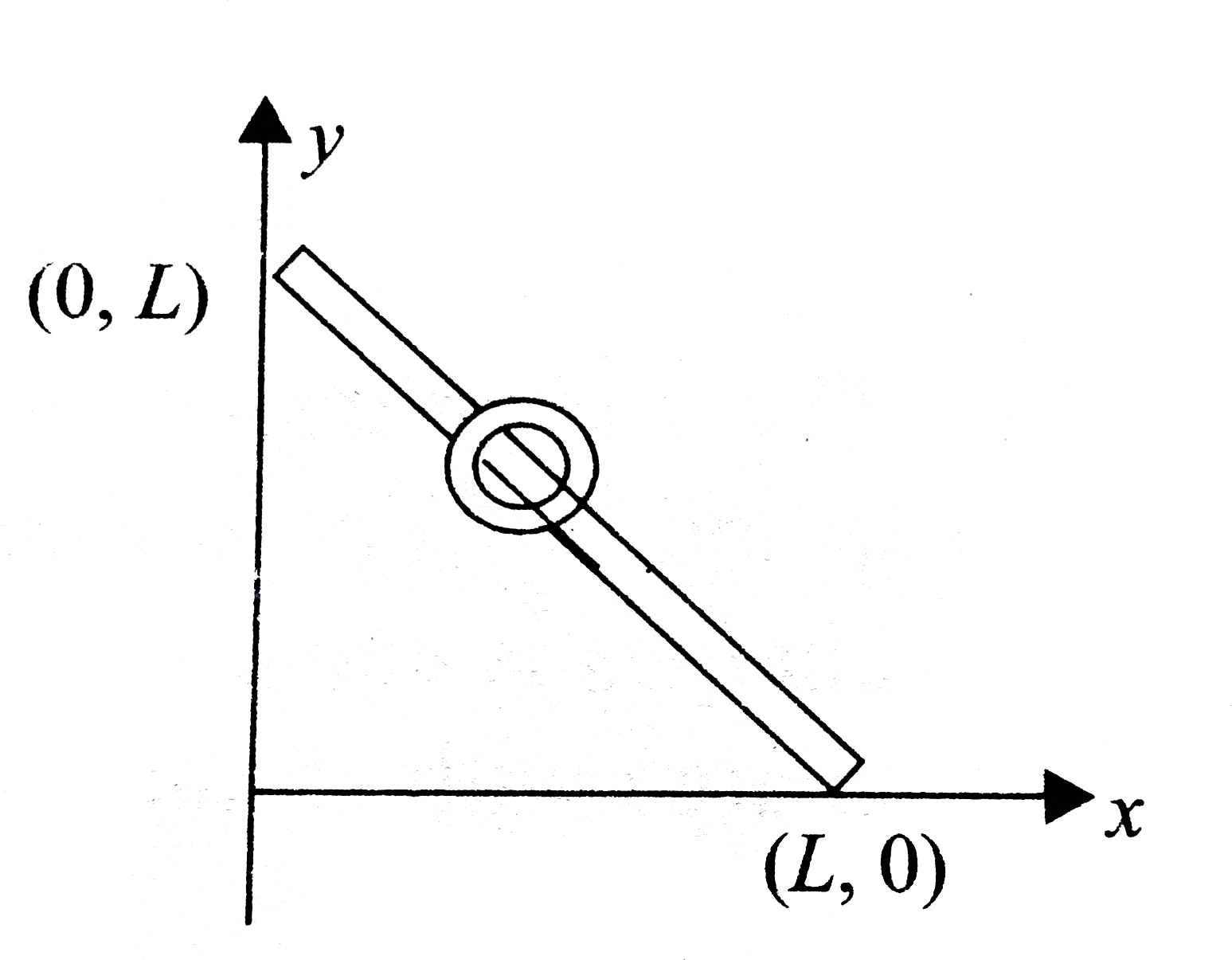 .A(QL2/m)1/2B2(QL2/m)1/2C4(QL2/m)1/2Dzero
.A(QL2/m)1/2B2(QL2/m)1/2C4(QL2/m)1/2Dzero - Question 2 - Select One
A ball of mass m is attached to one end of a light rod of length l, the other end of which is hinged. What minimum velocity v should be imparted to the ball downwards, so that it can complete the circle ?
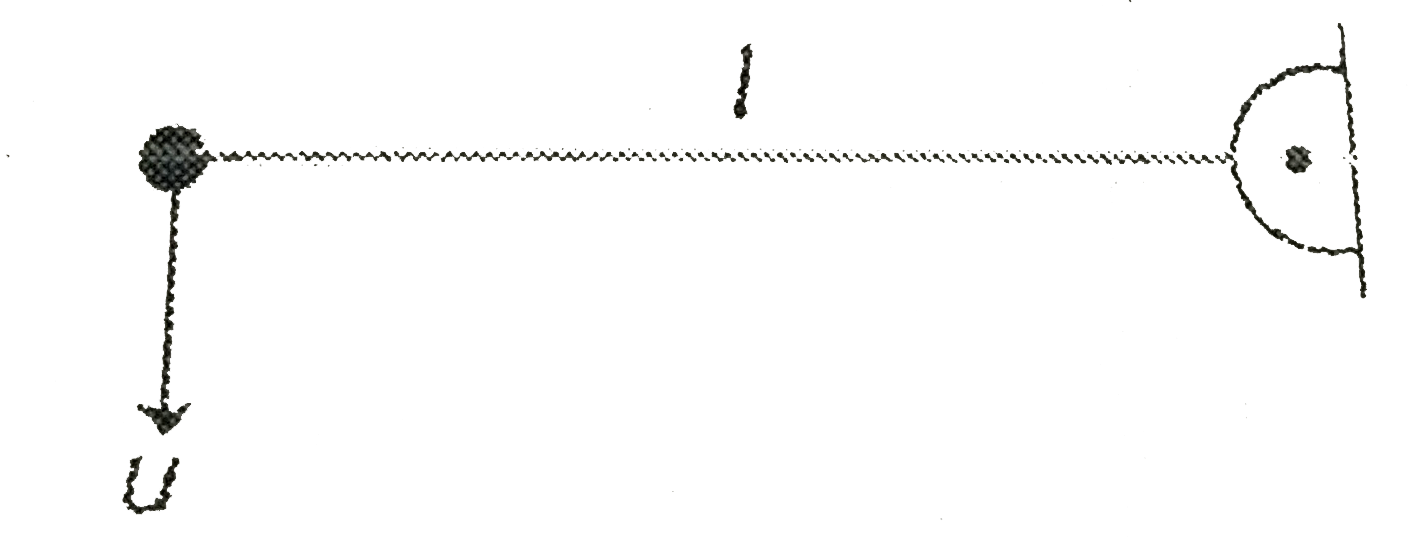 A√glB√5glC√3glD√2gl
A√glB√5glC√3glD√2gl - Question 3 - Select One
The instaneous velocity of point B of the given rod of length 0.5 is 3m/s in the represented direction. The angualr velocity of the rod for minimum velocity of end A is
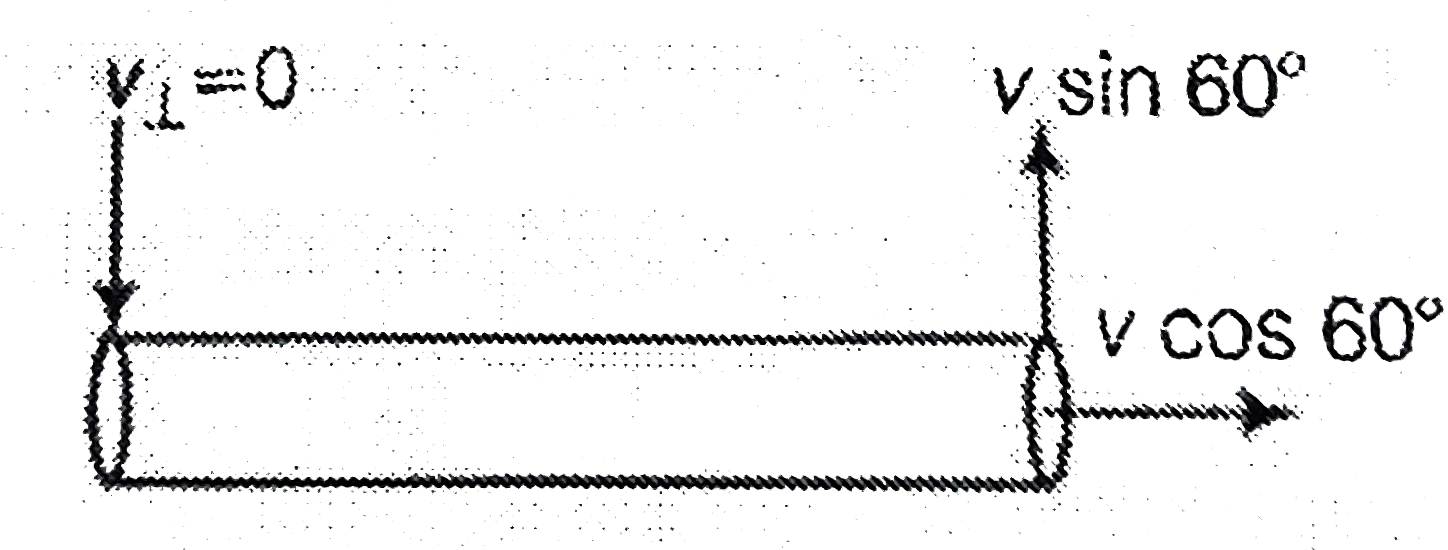 A1.5 rad/sB5.2 rad/sC2.5 rad/sD3.6 rad/s
A1.5 rad/sB5.2 rad/sC2.5 rad/sD3.6 rad/s
A thin non-conducting ring of mass m carrying a charge q can freely rotate about its axis. At t=0, the ring was at rest and no magnetic field was present. Then suddenly a magnetic field B was set perpendicular to the plane. Find the angular velocity acquired by the ring.
View SolutionAssume that a point charge q is projected from a large distance toward the center of a fixed charged ring along its axis. What should be its initial velocity so that the charge may reach the other side of infinity?
View SolutionThe electric field intensity in a region is given by →E=(−xˆi+yˆj)V/m2 where x, y are in meters. Then the pattern of line of forces in x-y plane is given by
View SolutionA uniform rod of length l and mass 2m rests on a smooth horizontal table. A point of mass m moving horizontally at right angle to the rod with velocity v collides with one end of the rod and sticks to it, then:
View SolutionA thin uniform rod of mass m and length l is kept on a smooth horizontal surface such that it can move freely. At what distance from centre of rod should a particle of mass m strike on the rod such that the point P at a distance l3 from the end of the rod is instantaneously at rest just after the elastic collision?
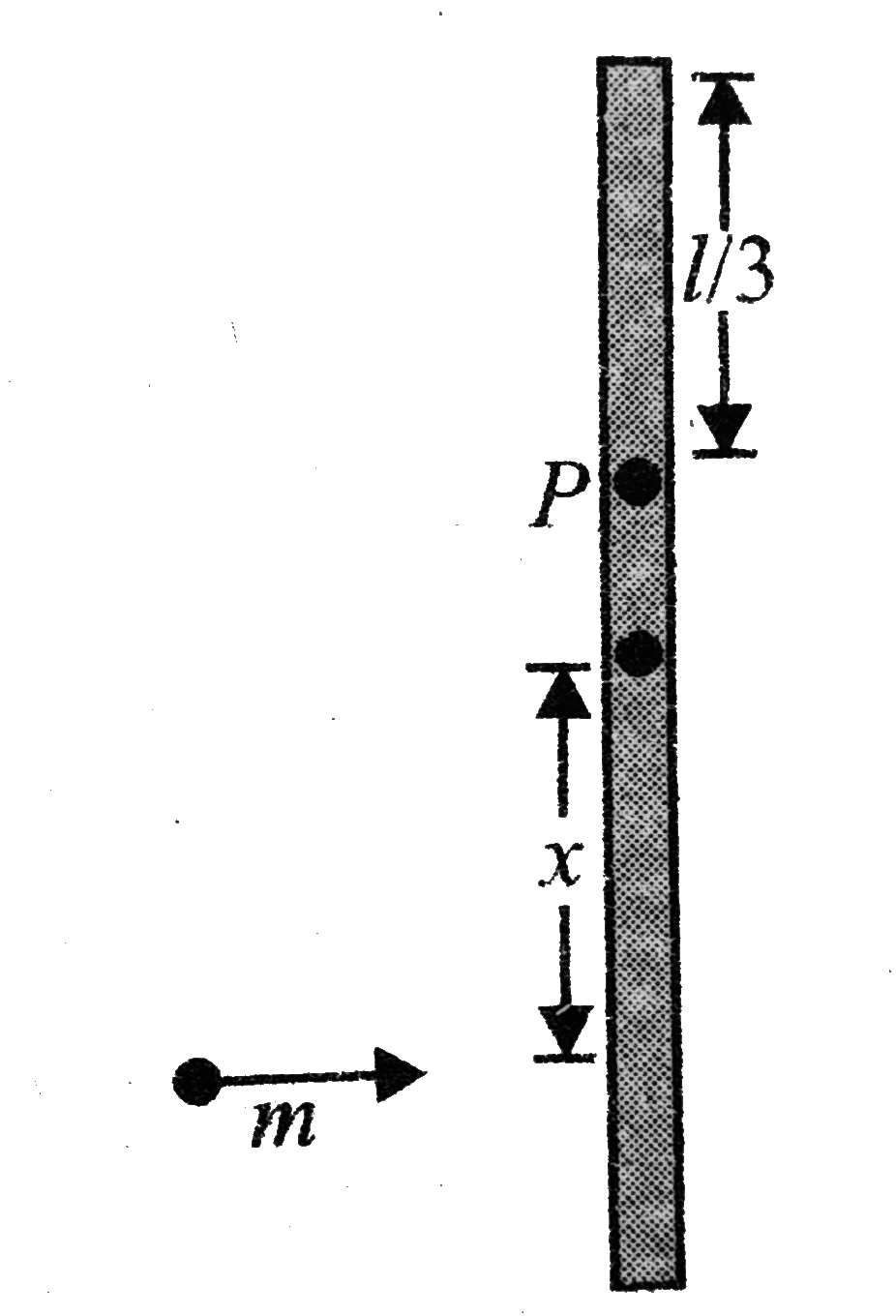 View Solution
View Solution

